Barbecue oven: the subtleties of construction
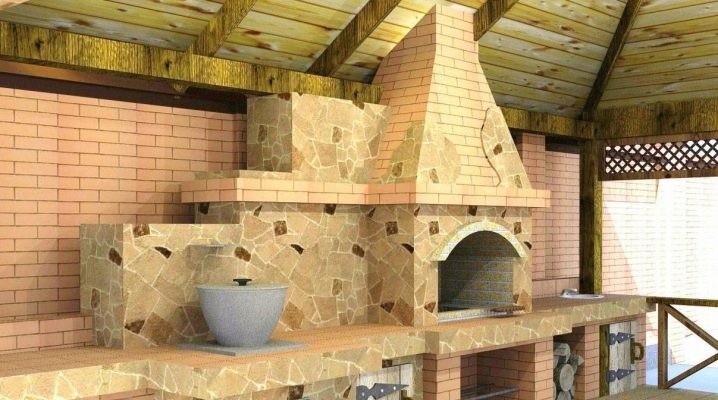
The craving for outdoor cooking is ineradicable. Fighting with it is not worth it - you can just make your aspiration come true. And a high-quality barbecue oven can be of great help here.
Features and purpose
A barbecue oven is similar in function to a cauldron and a brazier: all three types of hearths allow you to use fire for cooking. The brazier can be easily distinguished by most people, because it is strictly intended for barbecue. The line separating barbecue from outdoor fireplaces is much thinner. But it will not be difficult to recognize it, because in the fireplace there is no special grate for the mode of processing at the stake. It is designed primarily to create a cozy atmosphere, and food processing is a secondary function for it.

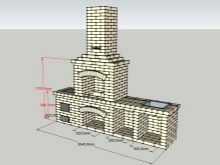
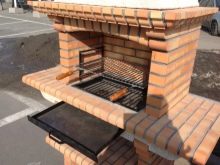
Any barbecue project should imply the rational removal of the stove from residential and outbuildings. She not only creates a significant fire threat, but can constantly catch up with smoke around, and this is unlikely to please even the most ascetic and patient people. They design the barbecue as carefully as possible, taking care of the convenience of visiting the house. At any moment you may need to return there to take various food, clothes or dishes.
Carefully and thoughtfully, you should select the material for manufacturing: it must be very durable, exclude fires, not collapse under the influence of weather elements.

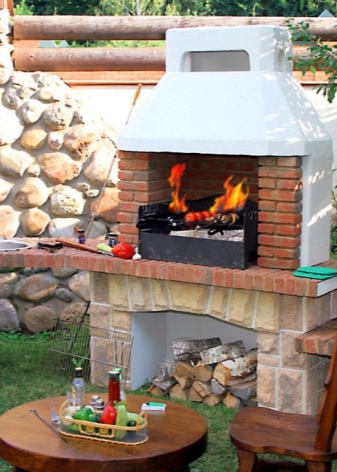
Varieties
The literal translation of barbecue from English is open fire. The hemispherical cauldron that appeared in the 20th century gave this type of hearth a new impetus. The furnace complex can be presented in different variations:
- Disposable. It is made of thin sheet metal. Coal is placed in the pallet, and the top is covered with a grate.
- Mobile. This is a kind of suitcase that can be easily moved to the desired location. Ideal for lovers of picnics and barbecues on the street.
- Boiler. American-born type. Equipped with a dome-shaped lid, when closed, the structure resembles an oven (you can cook a lot of meat at once).
- Cart. The mechanism is rather complicated, the working part is foldable or fixed in some variations.
- Stationary. Most often made of brick and complemented by a large table for guests.
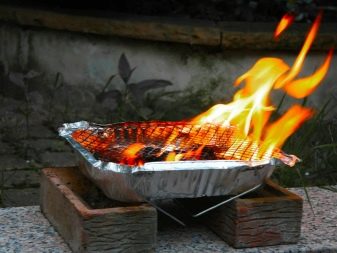
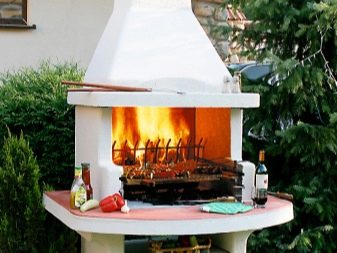
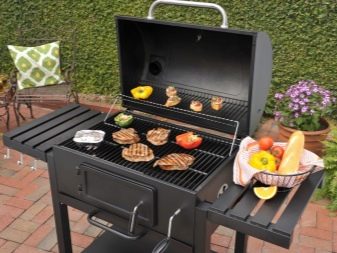
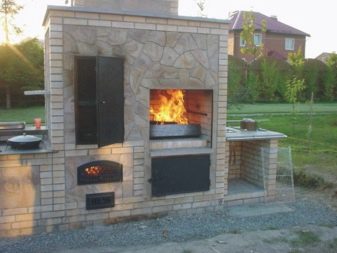
Besides coal-fired barbecues, there are other options. The natural gas stove is often used in cafes and other similar types of establishments. In summer cottages, such structures are used additionally and as a grill; it is often possible to find cases when they are built into garden elements. Electrical products are compact in size - they are placed on the most common tables. But even if we talk about street fireplaces (open hearths) of a familiar look, then they can be represented by far not only elementary solutions.
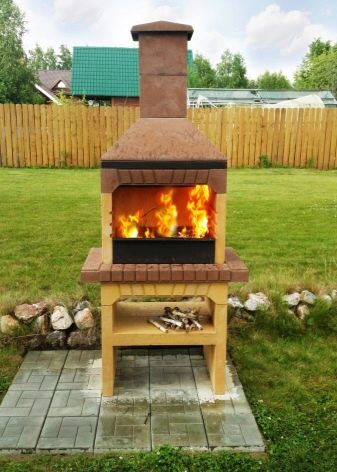
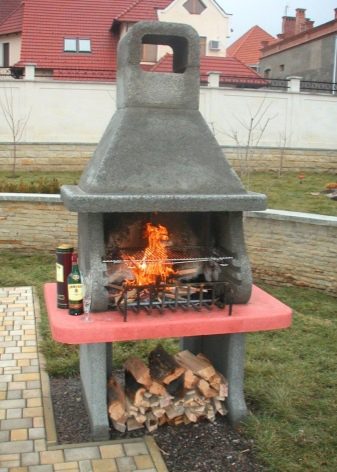
Quite often, an extended open firebox is used, which is needed as a fireplace in a garden or a gazebo, and the addition of a grate or a skewer allows you to cook meat very tasty. A Russian oven can also be used as a barbecue, in the oven of which baking, a smokehouse and even a cooking stove are excellent. A stationary barbecue can be varied over a fairly wide range: it is placed both at ground level and slightly above or below it. The choice of a square or round configuration is entirely up to the owners. An invariable requirement is only covering the site around the hearth with non-combustible material.
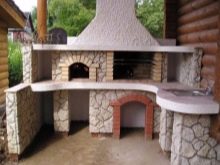
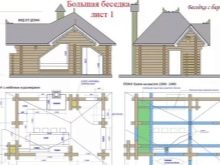
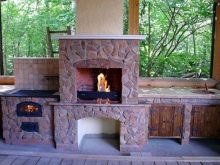
Where to locate?
Gazebos and terraces are considered the most suitable for setting up a barbecue, thanks to which you can stay outside regardless of the weather conditions. An equally important factor is compatibility with other parts of the landscape, because the stove should harmoniously complement the composition of the cottage or garden area, and not get out of it. When the yard is covered with bricks, it is advisable to install a stove made of a similar material. It is advisable to think about the location of the barbecue even at the stage of thinking over the landscape as a whole.
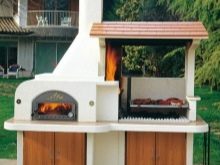
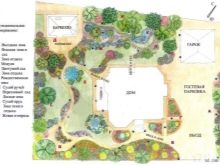
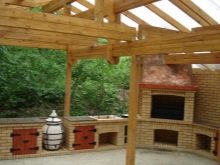
The ideal barbecue area should be removed not only from the house and outbuildings, but also from any bush, tree, fence and other flammable structures. At the same time, you should think about protecting your home from smoke, and about paving a lawn or lawn (if the stove will stand exactly there). A very important detail is high-quality lighting, because holidays and just friendly gatherings tend to drag on until the evening and even late at night ...
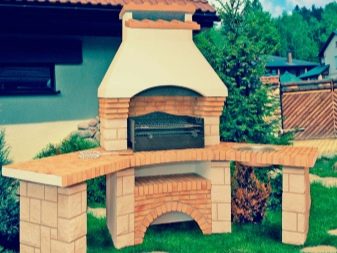
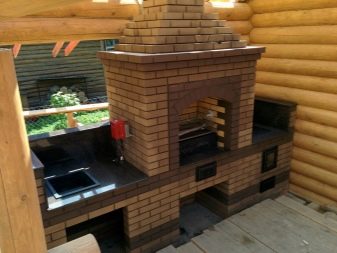
Stationary structures are set taking into account one more consideration - ease of use. “Convenience” cannot be described by any one standard, this is largely a subjective matter. But it is recommended to bring paths to the barbecue area; if the garden or cottage is already equipped, you will have to choose among the places where they go. It so happens that there is not a single building with a roof on the site, except for the house, then the place is chosen, focusing on the supply of space for mounting the dining group. In addition, during installation, it is desirable to maintain a certain distance from neighboring areas, regardless of whether homemade or factory ovens are used.

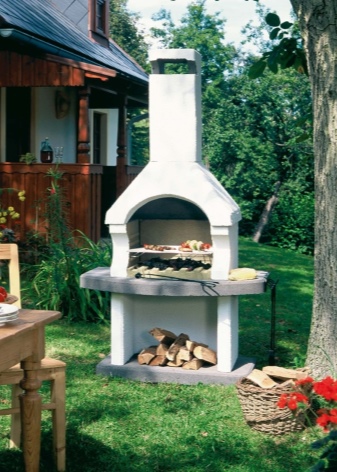
Manufacturing materials
Even the best design and well-thought-out layout will not achieve an optimal result if the choice of construction materials is inattentive. In most cases, different types of bricks are used for the construction of a barbecue. It should be noted that the back wall heats up to high temperatures, therefore, in this case, it is better to use refractory bricks instead of the simple option. The foundation is often made of marble or granite, which can withstand significant loads.

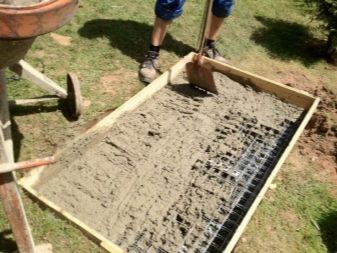
Street brick hearths are constructed mainly of chamotte bricks of a universal profile. Of the brands on the market, the best results are shown by ША and ШБ, which easily tolerate heating up to 1650 degrees. If we talk about natural materials, then when creating stoves, it is recommended to use:
- basalt;
- limestone;
- dolomite.

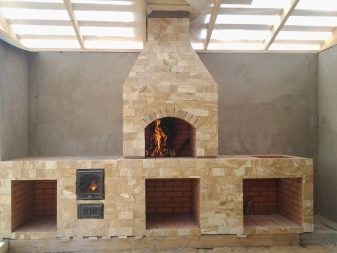
In addition to construction materials, you need to take care of the preparation of joint solutions. To obtain them, cement and sand are used, and red clay is used for laying fireclay bricks. It is poured with the volume of water provided for by the technology and left alone for 5-6 days, after which it is stirred until a homogeneous mass is formed. Sifted sand (relatively little) and a small portion of M200 cement complete the process of preparing the composition.
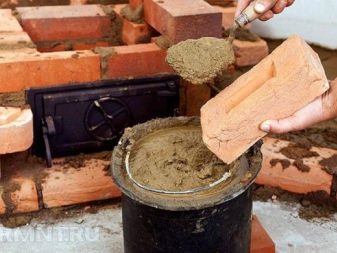
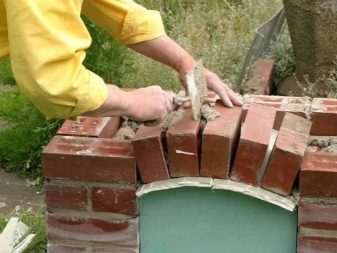
It is not at all necessary to build a barbecue with natural stone or bricks. Metal structures also perform well. Cast iron products are especially widely used: when using them, the risk of soot formation is minimal. In the internal volume of the furnace, heat is distributed perfectly evenly and lasts for a long time - even the best grades of steel are not capable of this. The disadvantage of cast iron is the severity of the hearth, but if it is installed permanently, this circumstance can be neglected.


In artisanal conditions, it is easy to make an impromptu barbecue from a gas cylinder. Compared to such a solution, even the simplest industrial-made structures are prohibitively expensive. By strictly observing the procedure, even people who are not too experienced in working with metal will get an excellent result. Consumers can put exactly the functionality they need into the device and not pay for useless add-ons.And one more thing: designs based on a gas cylinder are quite mobile.
Since in production these containers are made as strong as possible, there is no reason to fear their unreliability. The bottom will not burn out, and after finishing cooking the meat, you just need to close the lid - there is no need to pour, extinguish the fire. Important: before starting work, you will have to release all the remaining gas that was left after using the cylinder.
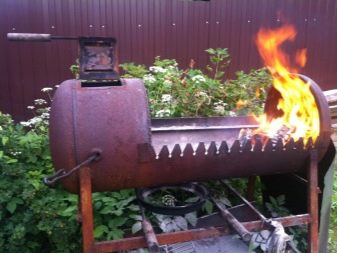
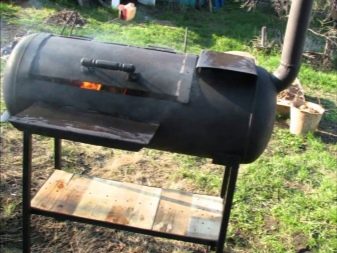
This type of barbecue also has several disadvantages:
- without heat-resistant paint, aesthetic properties deteriorate;
- the product turns out to be very heavy;
- you will need solid experience in working with welding equipment (if you are unsure as a result, it is better to buy a ready-made structure).
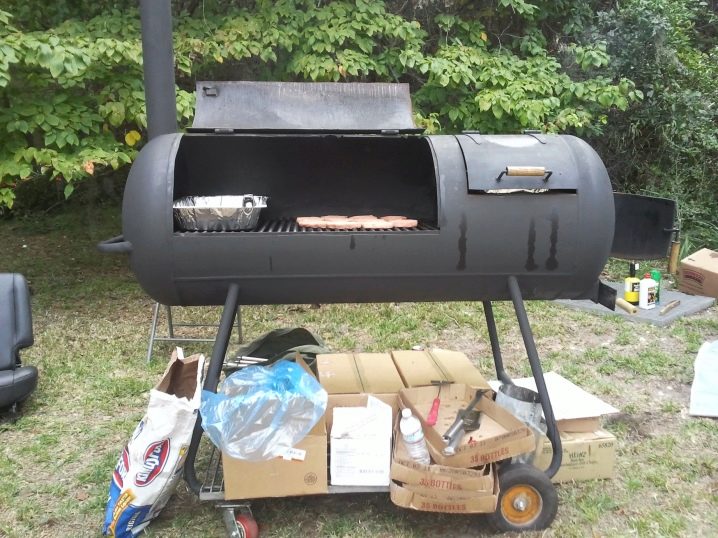
Phased production
Barbecue drawings and diagrams should reflect not only their size and the type of materials used, but also the order in which the bricks are laid. It is important to immediately determine the structural features of the structure: pay attention to the arrangement of shelves and wood-burning niches, to stands for cooked dishes. It is recommended to reflect in the drawings the view of the roof and the level of the grate fixed above the brazier, as well as the location of the sink.
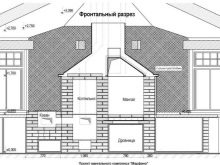
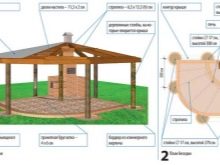
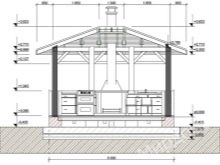
When building a barbecue with your own hands, it is advisable to focus on the following dimensions:
- height - up to 180 cm;
- pedestal - up to 80, maximum - up to 90 cm;
- brazier height - 50-70 cm;
- the width of the inside of the oven is up to 50 cm.
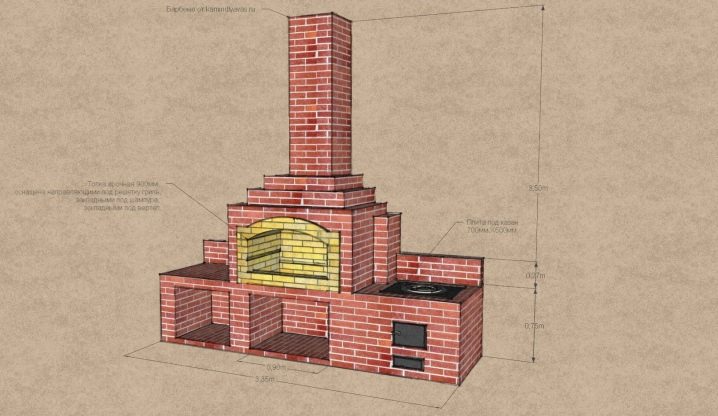
The barbecue is laid on a concrete base. Most often it is represented by a reinforced plate. The thickness of the structure is 0.3 m. In addition, it is recommended to place a pair of precisely cut sheets of roofing material under this base: they will perform the task of waterproofing the foundation from below. Tile cutters with diamond discs are used to chamfer bricks, and angle grinders with diamond discs are used to cut blocks. The initial row (ladder) needs to be laid out in ½ brick, and the second line is laid out of whole blocks.
The chimney can be made not only of brick, but also of metal. Additional savings in material will be provided by the rejection of brick tables. In order to build a furnace correctly, it is required to indicate in the drawing what the layered structure of the structure will be (how best to fold it in rows). The general rule is as follows: a pair of longitudinally oriented blocks is placed on the bottom brick directed along it. The chimney is most often made by users themselves, using steel structures or refractory bricks.
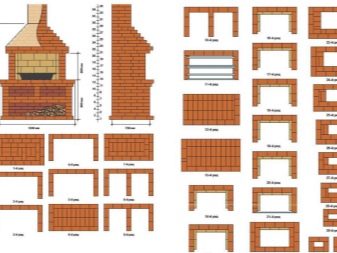
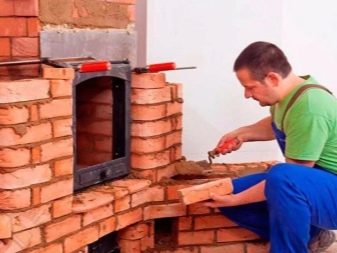
Operating tips
Even the best quality and well-built barbecue gives optimal results only if the rules of use are strictly followed. How carefully they are executed depends not only on the comfort of the owners of the dacha or personal plot, but also on fire safety. As with using any stoves, making fires, it is unacceptable to use flammable liquids, pour lubricants and vegetable oils into the fire. Another strict prohibition is the burning of garbage and food waste: they can not only ruin the oven itself, but also provoke poisoning. It is required to use only the type of fuel that is provided for by the design.
It is strictly forbidden to burn a lot of fuel at once or try to use the barbecue as a fireplace, heating stove. Only in the furnace can a fire be made, if you do it in the hearth, you can damage the structure or ignite a fire. Responsible owners always familiarize themselves with the design features and manufacturer's instructions before starting operation.
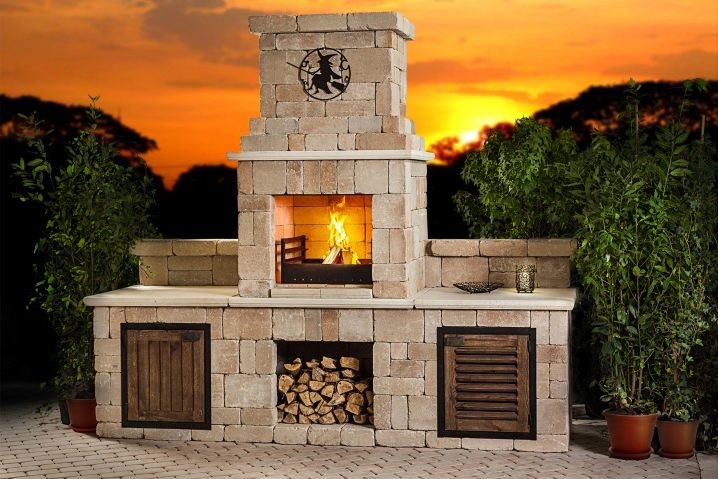
Do not light up a barbecue in winter or after precipitation occurs very abruptly: this can lead to cracking of the surface. No matter how the owners are in a hurry, the oven should be dried for up to 30 minutes on low heat.
When lighting and adding fuel, protective gloves must be worn when cleaning the barbecue. Easily igniting objects should not be brought near the fire. It is also worthwhile to closely monitor children, animals, to protect them from contact with the flame.The frypot, grate, firebox and walls should be inspected periodically. If cracks and traces of burnout are found, they should be eliminated immediately.
For the intricacies of building a barbecue oven, see the next video.





























































The comment was sent successfully.